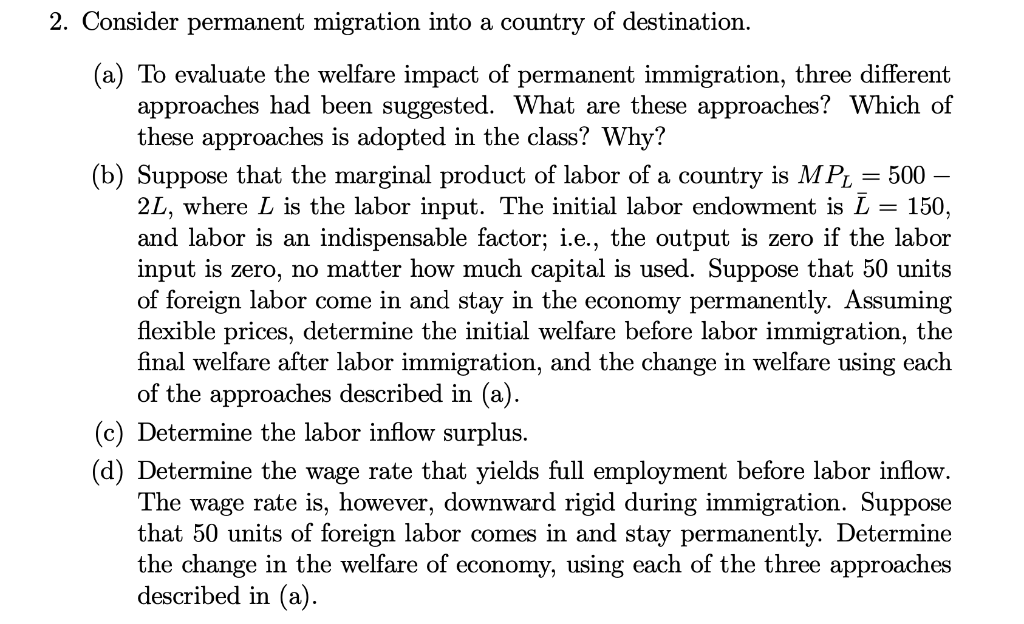
2. Consider permanent migration into a country of destination. (a) To evaluate the welfare impact of permanent immigration, three different approaches had been suggested. What are these approaches? Which of these approaches is adopted in the class? Why? (b) Suppose that the marginal product of labor of a country is MPL 500 2L, where L is the labor input. The initial labor endowment is I = 150, and labor is an indispensable factor; i.e., the output is zero if the labor input is zero, no matter how much capital is used. Suppose that 50 units of foreign labor come in and stay in the economy permanently. Assuming flexible prices, determine the initial welfare before labor immigration, the final welfare after labor immigration, and the change in welfare using each of the approaches described in (a). (c) Determine the labor inflow surplus. (d) Determine the wage rate that yields full employment before labor inflow. The wage rate is, however, downward rigid during immigration. Suppose that 50 units of foreign labor comes in and stay permanently. Determine the change in the welfare of economy, using each of the three approaches described in (a). 2. Consider permanent migration into a country of destination. (a) To evaluate the welfare impact of permanent immigration, three different approaches had been suggested. What are these approaches? Which of these approaches is adopted in the class? Why? (b) Suppose that the marginal product of labor of a country is MPL 500 2L, where L is the labor input. The initial labor endowment is I = 150, and labor is an indispensable factor; i.e., the output is zero if the labor input is zero, no matter how much capital is used. Suppose that 50 units of foreign labor come in and stay in the economy permanently. Assuming flexible prices, determine the initial welfare before labor immigration, the final welfare after labor immigration, and the change in welfare using each of the approaches described in (a). (c) Determine the labor inflow surplus. (d) Determine the wage rate that yields full employment before labor inflow. The wage rate is, however, downward rigid during immigration. Suppose that 50 units of foreign labor comes in and stay permanently. Determine the change in the welfare of economy, using each of the three approaches described in (a)







